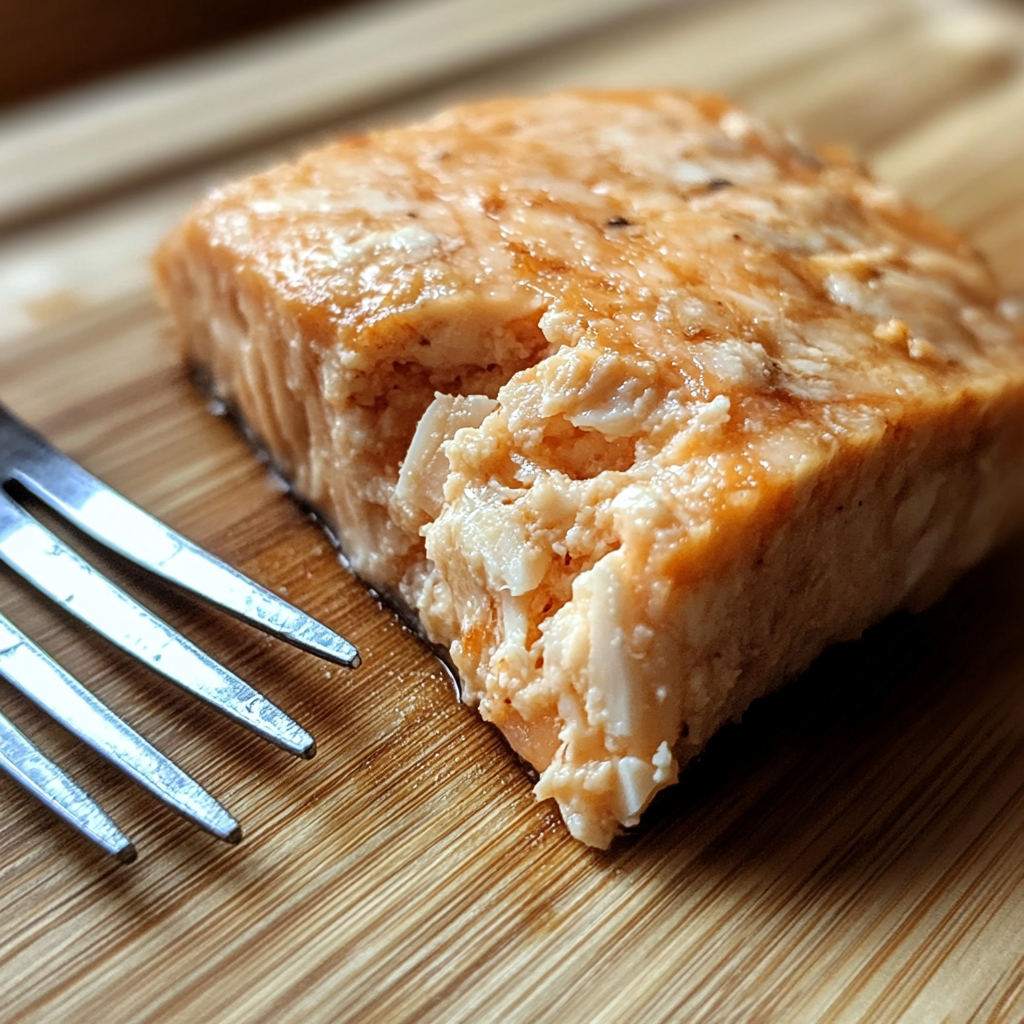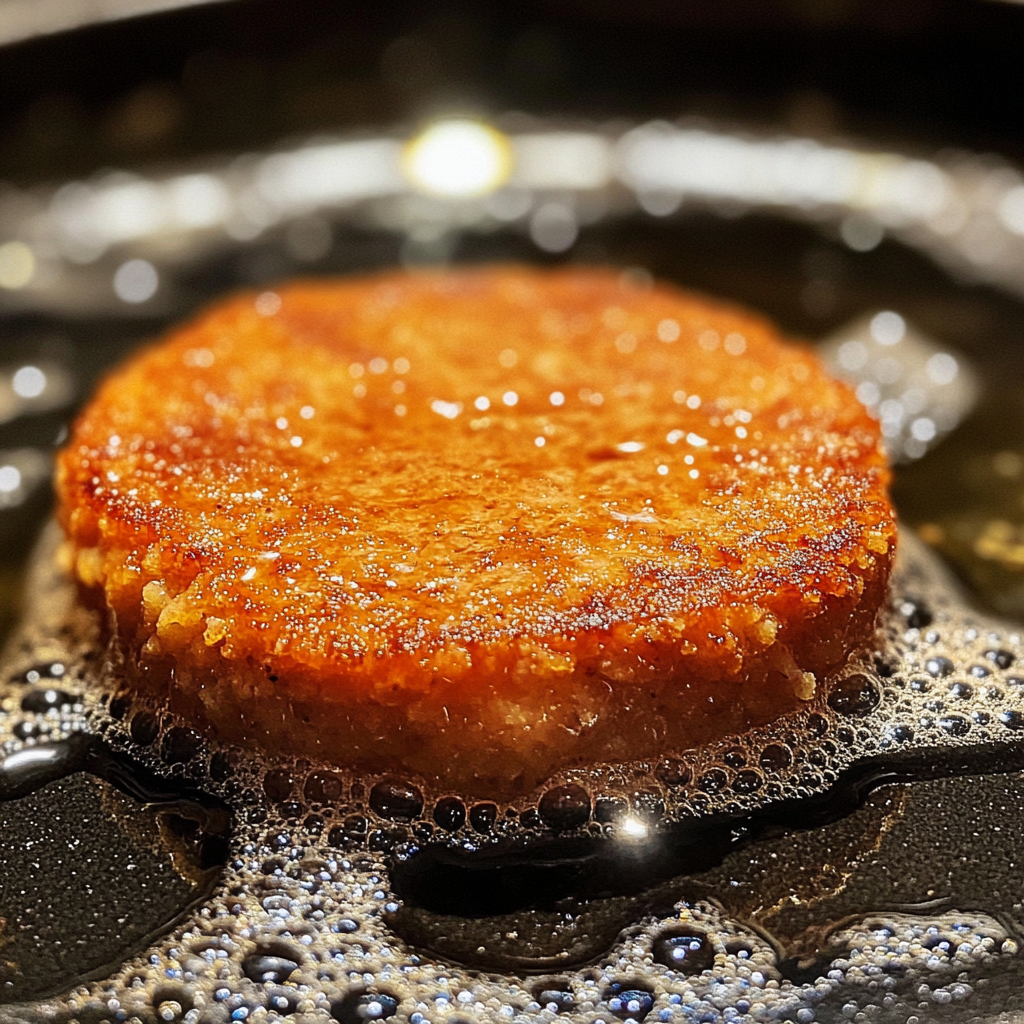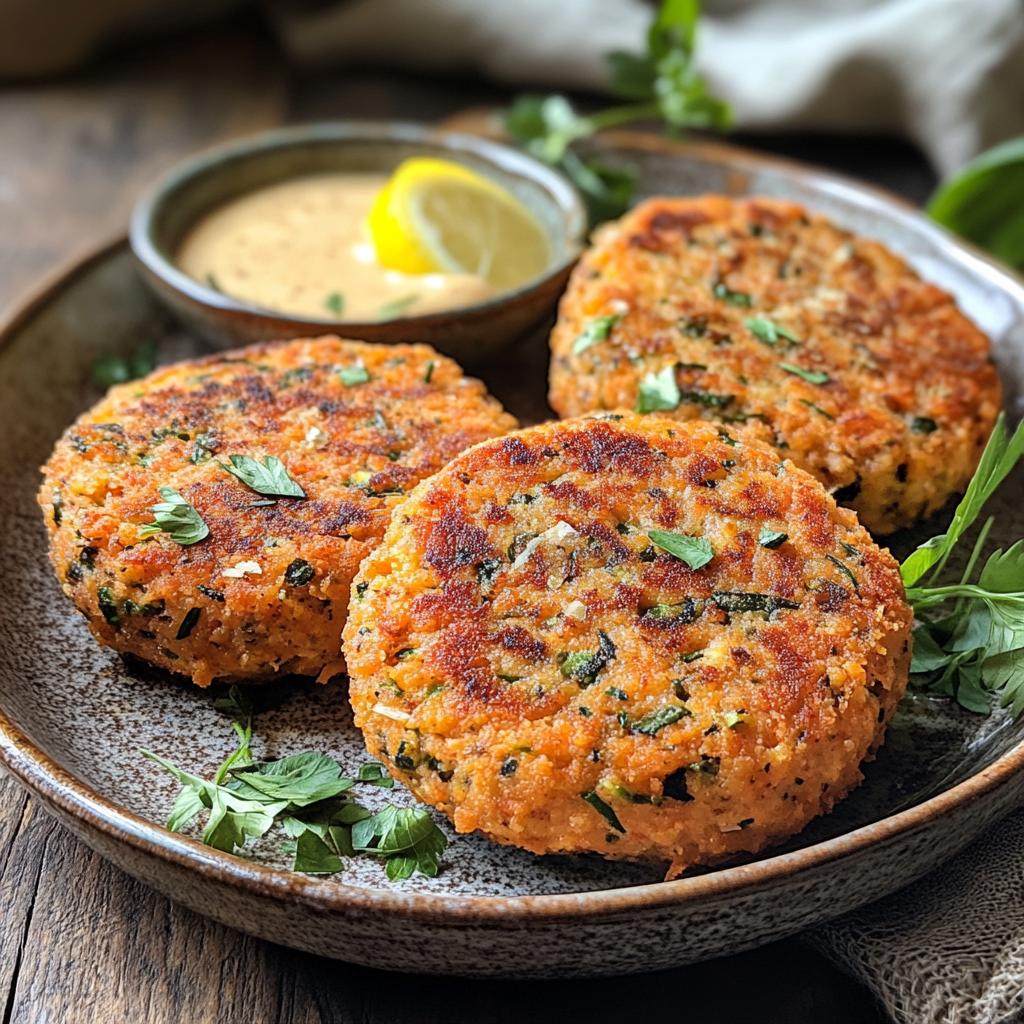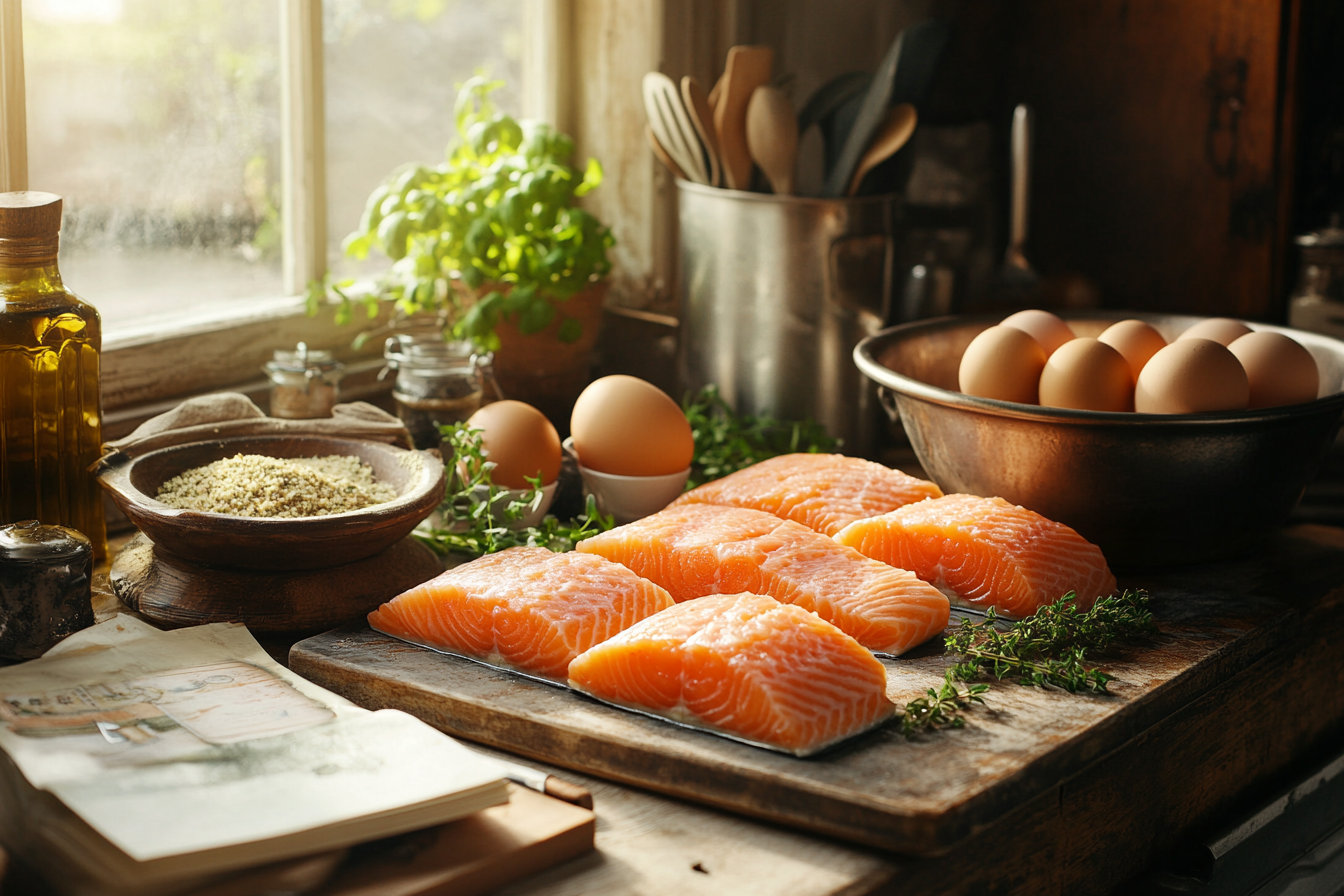Introduction: Understanding the Salmon Patty Debate
Salmon patties, a beloved dish for seafood enthusiasts, are not only packed with flavor but also incredibly nutritious. However, when it comes to making them, many cooks face one question that can influence both taste and texture: Do you leave bones in salmon patties?
The debate about leaving bones in salmon patties is an important one, with different schools of thought. Some believe the bones add valuable nutrients and help enrich the texture, while others prefer a smoother, boneless patty for a more refined experience. In this guide, we’ll delve into all aspects of the salmon patty-making process, especially whether bones should be included, to help you make an informed decision.
We’ll explore the nutritional benefits, textural impact, convenience, and provide you with step-by-step guidance on how to make salmon patties, whether or not you choose to keep the bones. In addition, we’ll look at various methods for cooking salmon patties, along with tips and tricks to elevate your culinary skills.
What Are Salmon Patties?
Salmon patties, also known as salmon cakes or salmon croquettes, are a popular dish made by combining salmon (either canned or fresh) with a variety of binding agents such as eggs, breadcrumbs, or flour. The mixture is then seasoned and shaped into patties before being pan-fried or baked to perfection. Salmon patties can be served on their own, with a dipping sauce, or even in a sandwich, making them a versatile meal for any occasion.
These patties are loved for their simplicity and flavor. In fact, many home cooks rely on canned salmon because it is convenient and accessible, providing a quick meal solution that is still packed with essential nutrients like omega-3 fatty acids, vitamins D and B12, and high-quality protein. But when using canned salmon, one common question arises: What do you do about the bones?
Do You Leave Bones in Salmon Patties? Nutritional Considerations
The bones in canned salmon are typically soft and fully edible, and they contribute significantly to the nutritional value of the dish. Here’s why leaving bones in your salmon patties can be beneficial:

1. A Boost in Calcium Intake
One of the most compelling reasons to leave bones in your salmon patties is the additional calcium they provide. Calcium is essential for maintaining strong bones and teeth, as well as supporting proper muscle function and nerve transmission. A serving of canned salmon with bones offers a substantial calcium boost, particularly for those who are lactose intolerant or do not consume dairy regularly.
- Canned salmon with bones contains nearly the same amount of calcium per serving as a glass of milk. For individuals with specific dietary needs or those looking to increase their calcium intake naturally, this can be a great addition to their meals.
2. Phosphorus and Magnesium for Bone Health
Beyond calcium, the bones in canned salmon are also rich in phosphorus and magnesium. These minerals play a crucial role in overall bone health and in regulating energy production at a cellular level. While these nutrients are present in the fish itself, the bones provide an extra concentrated source.
3. Easy Digestion of Soft Bones
Unlike the tough bones found in other types of fish, the bones in canned salmon have undergone a special pressure-cooking process that softens them. This means that, while they are still structurally intact, they are soft enough to crush and blend into the mixture without posing a choking hazard. The bones can be mashed into small pieces that are almost unnoticeable in the final dish, especially when combined with the other ingredients.
Do You Leave Bones in Salmon Patties? Texture and Taste Considerations
While the nutritional benefits of leaving bones in salmon patties are clear, not everyone enjoys the added texture. Let’s examine the textural differences when including or omitting bones in salmon patties.
1. Crunchy or Gritty Texture?
For some, the texture of crushed bones in the patties adds a slight crunch or grainy feel. This can enhance the sensory experience of the dish, especially when paired with crispy breadcrumbs on the outside. However, if not properly mashed, larger pieces of bones can create an unexpected crunchy bite that may be unpleasant for some.
The best way to avoid an overly gritty texture is to thoroughly mash the bones with a fork or potato masher before mixing them into the patty ingredients. This ensures the bones integrate seamlessly without creating an undesirable texture.
2. Bone-Free Smoothness
On the other hand, if you prefer a smoother, more uniform texture, you might opt to remove the bones. This is especially true if you’re serving the patties to kids or anyone with texture sensitivities. Removing the bones can give the patties a finer, more delicate consistency.
For those who value a uniform texture over the nutritional benefits, removing the bones from canned salmon is relatively easy and doesn’t take much time. Additionally, using fresh, deboned salmon fillets eliminates the issue altogether, though it does require extra preparation steps.
Related Recipe: Old-Fashioned Salmon Patties Recipe
How to Remove Bones from Salmon: A Step-by-Step Guide
If you’ve decided that you’d prefer to remove the bones from your salmon patties, here’s how to do it efficiently:
For Canned Salmon
- Open and Drain: Start by opening the can and draining the liquid from the salmon.
- Separate the Fillet: Gently press the salmon open using your fingers or a fork, exposing the spine and bones inside.
- Remove the Bones: Use your fingers or a fork to lift out the large pieces of bones, including the vertebrae. The bones will be soft, so you can easily pull them out without much force.
- Check for Small Bones: Run your fingers through the salmon to feel for any smaller bones that might remain. These can be mashed or discarded as preferred.
For Fresh Salmon
- Run Your Fingers Along the Fillet: After cleaning and filleting the salmon, use your fingers to feel for any small pin bones along the length of the fillet.
- Use Tweezers or Bone Pliers: With fish bone tweezers or regular kitchen tweezers, gently pull the bones out in the direction they are pointing. Work slowly to avoid tearing the fillet.
- Double Check: Continue feeling the fillet until you are confident that all bones have been removed.
Should You Leave the Skin On?
While we’re discussing whether to leave the bones in salmon patties, it’s worth considering the skin as well. Just like bones, salmon skin can add both flavor and texture to your patties, but not everyone enjoys it.
1. Skin Adds Rich Flavor
Leaving the skin on the salmon can impart a deeper, richer flavor to your patties. When pan-fried or baked, the skin becomes crispy and provides a contrasting texture to the soft interior of the patty. The fats in the skin also add a buttery richness that many find appealing.
2. Health Benefits of Salmon Skin
Salmon skin contains beneficial omega-3 fatty acids, which are known for their anti-inflammatory properties and support for heart health. These fatty acids are concentrated just beneath the skin, making it a nutritious addition to your dish.
3. Removing the Skin for a Softer Texture
If you’re aiming for a smoother texture, you can remove the skin before preparing the salmon patties. This will give the patties a more refined consistency, without the added crunch from the skin.
Related Recipe: Salmon Bites Recipe
Cooking Methods: Frying vs. Baking Your Salmon Patties
Once you’ve decided whether to leave the bones and skin in your salmon patties, it’s time to think about cooking methods. Both frying and baking are popular methods, and each has its own advantages.
1. Frying for a Crispy Finish
Frying is the go-to method for most home cooks because it results in a crispy, golden-brown exterior. Here’s how to fry your salmon patties to perfection:
- Heat the Oil: Start by heating a few tablespoons of oil in a pan over medium heat. Vegetable oil, canola oil, or even a high smoke-point olive oil works well.
- Form Patties: Shape the salmon mixture into patties of your desired size, ensuring they are compact and uniform in thickness for even cooking.
- Fry Until Golden: Fry the patties for 3-4 minutes on each side, or until they are golden brown and crispy. Avoid overcrowding the pan to ensure a consistent, crispy texture.
2. Baking for a Healthier Option
Baking is a healthier alternative to frying, as it requires less oil. Baking your salmon patties results in a softer exterior, but the patties remain just as delicious. Here’s how to bake them:
- Preheat the Oven: Set your oven to 375°F (190°C).
- Use a Non-Stick Tray: Line a baking tray with parchment paper or spray it lightly with cooking spray to prevent sticking.
- Bake Until Done: Bake the patties for 15-20 minutes, flipping them halfway through to ensure even cooking. The patties should be golden and firm when fully cooked.

Related Recipe: Smoked Salmon Recipe Guide
The Perfect Binder: How to Keep Salmon Patties from Falling Apart
Regardless of whether you leave the bones in or not, one of the most crucial steps in making salmon patties is ensuring they stay intact while cooking. The key to this lies in the binder.
1. Eggs as a Binder
Eggs are the most common binder used in salmon patties. They help hold the salmon and other ingredients together, ensuring that the patties don’t fall apart during cooking. For the best results, use one egg per 12 ounces of salmon.
2. Breadcrumbs for Texture and Stability
Breadcrumbs are another essential component that provides structure and helps absorb excess moisture. You can use regular breadcrumbs, panko, or even crushed crackers for added flavor and crunch.
3. Additional Binders
If you’re looking for a gluten-free alternative or simply want to experiment, you can use mashed potatoes, cooked quinoa, or even oats as a binder. These ingredients will help the patties maintain their shape while adding extra flavor and nutrition.
Related Article: How to Keep Salmon Patties from Falling Apart
Substitutes for Breadcrumbs in Salmon Patties
While breadcrumbs are the traditional choice, you may not always have them on hand or may prefer a healthier option. Here are some excellent alternatives:
- Crushed crackers: Adds a rich, buttery flavor to the patties.
- Panko: Lighter and crunchier than regular breadcrumbs, panko gives a great texture.
- Rolled oats: Adds fiber and makes the patties more substantial.
- Ground almonds or almond flour: A gluten-free alternative that adds a nutty flavor.
Related Article: Substitutes for Breadcrumbs in Salmon Patties
Conclusion: Do You Leave Bones in Salmon Patties?
Ultimately, whether or not you leave bones in your salmon patties is a matter of personal preference. If you prioritize nutrition, leaving the bones in provides an excellent source of calcium and other minerals. If texture is your main concern, removing the bones will result in a smoother, more refined dish.

Regardless of your choice, by following the tips and techniques outlined in this guide, you can create delicious, perfectly cooked salmon patties every time.
So, the next time you make salmon patties, whether you choose to leave the bones in or not, remember to experiment with different binders, cooking methods, and seasoning combinations to create your perfect version of this classic dish.

